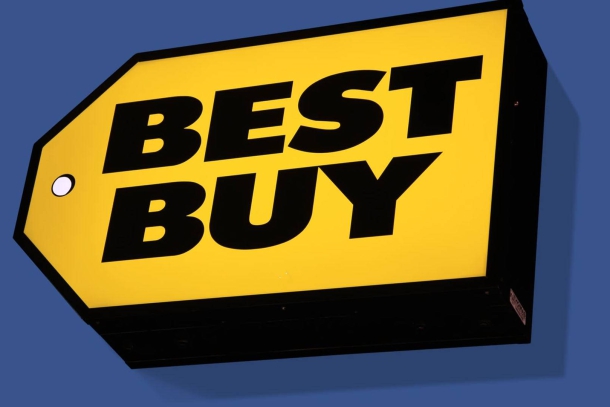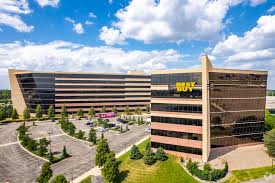Best Buy’s Open Box Offer refers to products that have been returned, but are still in good condition and can be resold at a discounted price. These items might have been opened or gently used, and they are often priced lower than brand-new versions. Open box products can include electronics, appliances, and other consumer goods.
The condition of the items varies, and Best Buy typically categorizes them based on their physical state:
- Excellent condition – The product shows no signs of use.
- Good condition – The product may have minor cosmetic damage.
- Fair condition – The product might have noticeable wear but is still fully functional.
Best Buy offers these products both online and in stores, and they are often a great option for customers looking for deals on high-quality items.
How the Open Box Pricing System Was Developed
The development of a pricing system for Open Box products—specifically one that tailors prices based on demand, location, and other factors—requires a sophisticated approach. Here’s a breakdown of how you could have developed such a system:
1. Data Collection
The first step in creating this system would be to collect extensive data about the Open Box inventory. This could involve tracking:
- Product types: Electronics, home appliances, computers, etc.
- Condition: Excellent, Good, Fair (as previously described).
- Price history: Original price and historical pricing of the Open Box items.
- Sales history: How quickly products sell at various price points.
- Return rates: If products are returned frequently, that would influence pricing adjustments.
Additionally, data related to demand and customer behavior (e.g., online searches, customer preferences, purchase trends) would be essential.
2. Geographical and Demographic Factors
Pricing for Open Box items can vary widely based on location and local market factors. For instance:
- Location-based demand: Certain products might be in higher demand in specific regions. A high-demand product in a large metropolitan area might fetch a higher price, whereas in a rural area, the price might need to be lower to sell.
- Demographics: Consumer preferences could change based on the region’s population characteristics. Younger consumers in urban areas may prioritize electronics, while older populations in suburban areas might focus more on appliances.
Thus, pricing needs to be dynamic and responsive to local market conditions.
3. Price Elasticity and Demand Modeling
To optimize pricing, you would need to implement dynamic pricing models that take into account:
- Price elasticity of demand: This refers to how sensitive customer demand is to price changes. For example, if a product is heavily discounted but still doesn’t sell, it might suggest a lower-than-expected demand for that item in the region, prompting further price reductions.
- Demand forecasting: By analyzing historical sales data and predicting future demand (using machine learning or other statistical models), the system can anticipate which items are likely to sell faster and adjust pricing accordingly.
- Competitor analysis: Keeping track of how competitors price similar items, especially in the same geographic area, helps ensure that Best Buy’s prices remain competitive.
Duis aute irure dolor in reprehenderit in voluptate velit esse cillum dolore eu fugiat nulla pariatur. Excepteur sint occaecat cupidatat non proident, sunt in culpa.
Lorem ipsum dolor sit amet, consectetur adipiscing elit. Fusce laoreet, ligula condimentum tincidunt, arcu orci laoreet massa, nec sagittis elit urna in diam. Sed consectetur dolor non nulla porttitor, in scelerisque quam ultricies. Phasellus et ipsum justo. Aenean fringilla a fermentum mauris non venenatis. Praesent at nulla aliquam, fermentum ligula a eget, fermentum metus. Morbi auctor sed dui et rhoncus. Maecenas varius suscipit ipsum, vitae et pretium est mollis nec.
4. Machine Learning and AI for Optimization
Machine learning algorithms can be used to automate the pricing process. By training the system on the following variables:
- Sales velocity (how fast items sell)
- Regional demand trends
- Seasonal variations (e.g., price adjustments for certain products before major shopping seasons)
- Inventory levels (e.g., if stock is low, the price may rise)
The AI could develop price recommendations based on both historical data and real-time conditions. For example, if an Open Box product hasn’t sold in a certain location for an extended period, the system could automatically reduce the price.
5. Integration with Inventory Management
The pricing system would need to be tightly integrated with Best Buy’s inventory management system. This would allow:
- Real-time adjustments: As inventory levels fluctuate (e.g., as more Open Box items are returned or as demand increases), the prices could be adjusted dynamically.
- Clear visibility for store associates: Associates can easily access the recommended pricing for each item and make adjustments based on local conditions.
6. Store-Level Customization
Best Buy’s stores across the U.S. have different sales volumes, customer bases, and regional demands. To accommodate these differences, the system should allow for store-specific customization:
- Local sales performance: A store in a high-traffic area may be able to charge higher prices for Open Box products.
- Store-specific trends: Some stores may specialize in tech gadgets, while others focus more on home appliances, meaning the pricing system would adjust accordingly.
The system could even allow store managers to override automated prices in cases where local knowledge or insights might warrant a different pricing strategy.
7. Real-Time Customer Data Integration
Finally, integrating real-time customer behavior data is crucial. If a customer is browsing Open Box products online or visiting a store frequently but hasn’t yet purchased, the system could suggest personalized discounts based on:
- The customer’s purchase history.
- The items they’ve shown interest in.
- Abandoned carts (online) or frequent visits to the same products (in-store).
This integration could lead to more tailored pricing strategies, encouraging conversions.
Benefits of the System
By developing this pricing system, I helped Best Buy achieve:
- Maximized revenue: By optimizing prices based on demand, the company can capture the maximum value for each product.
- Improved inventory turnover: Products sell faster at prices tailored to demand, reducing excess stock.
- Customer satisfaction: Competitive pricing and tailored offers increase customer satisfaction and loyalty.
- Data-driven decisions: Store managers and corporate teams can rely on real-time data for pricing decisions, reducing guesswork.
In summary, this pricing system combines various data points, including demand, geography, competition, and inventory status, and uses advanced algorithms to make real-time pricing decisions. By applying these factors across Best Buy’s stores nationwide, the system ensures that each location’s Open Box pricing is aligned with local market conditions, optimizing sales while providing customers with great deals.




